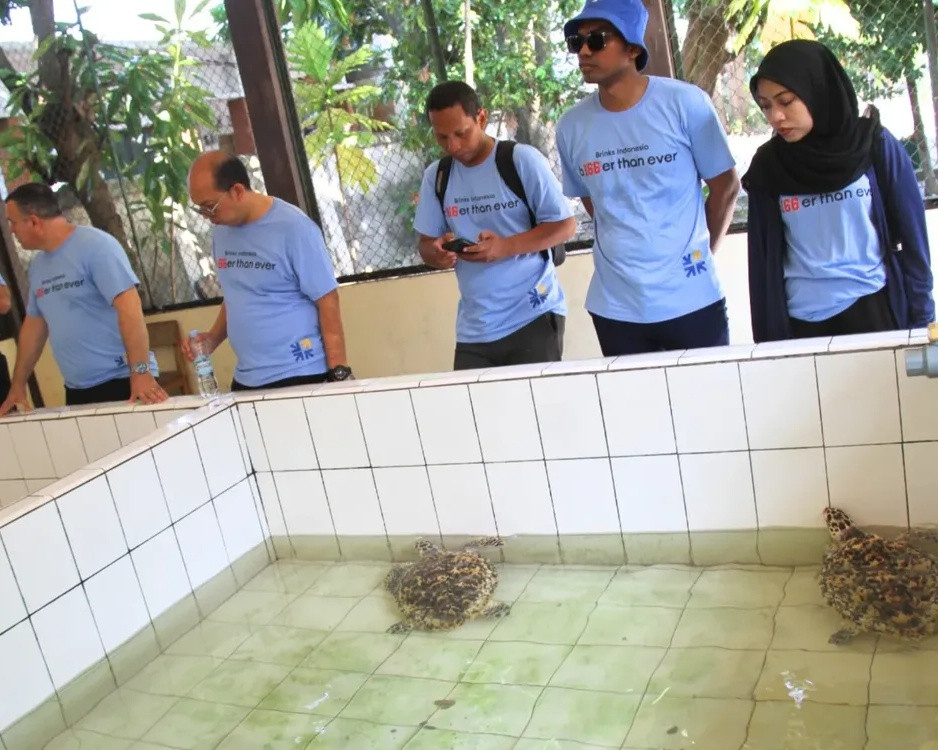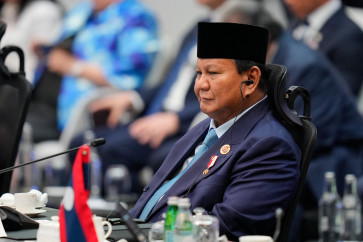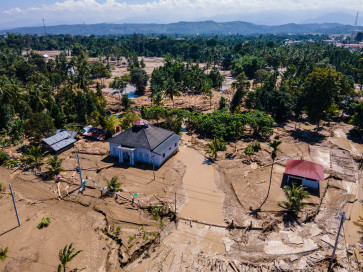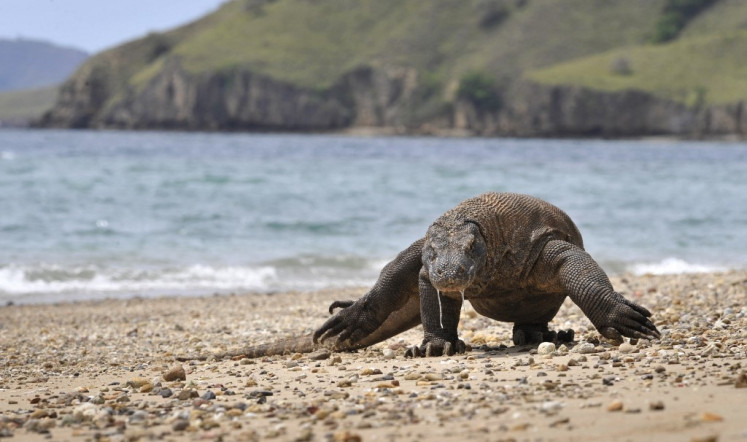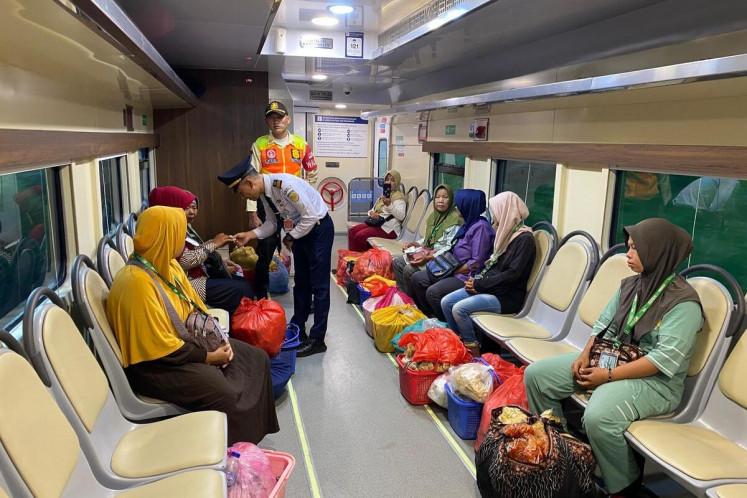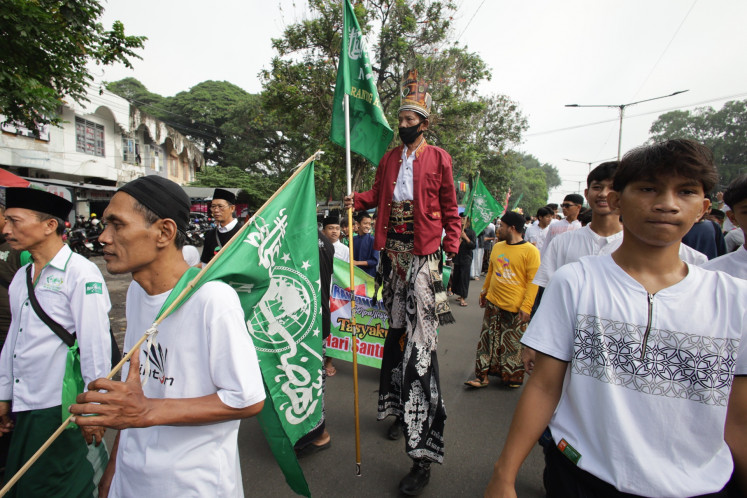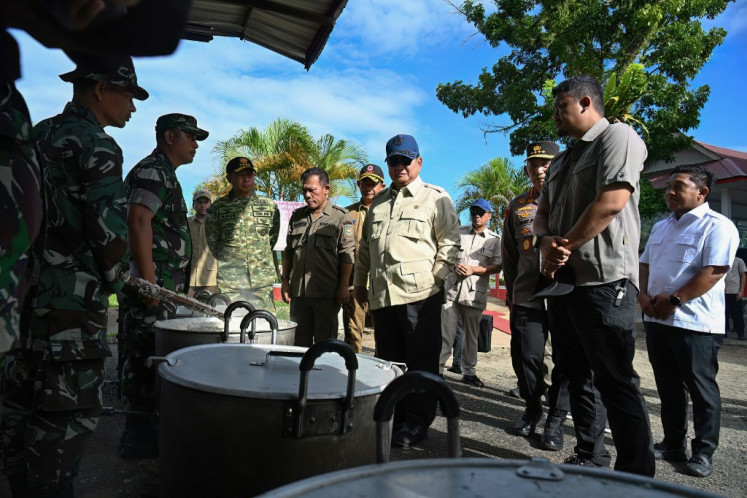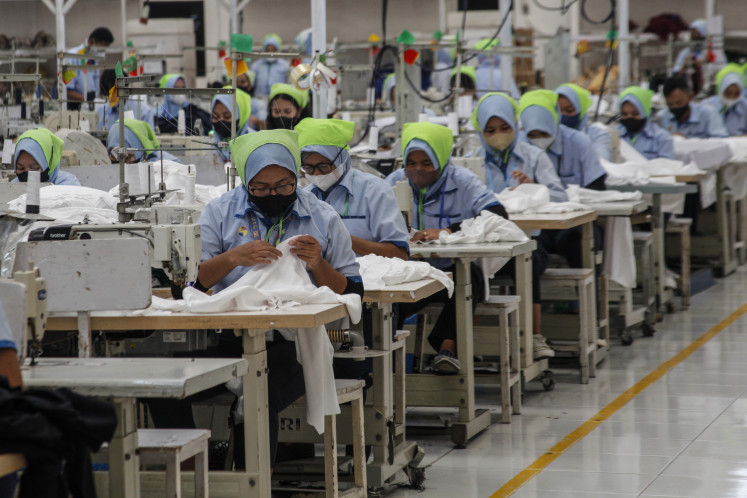Popular Reads
Top Results
Can't find what you're looking for?
View all search resultsPopular Reads
Top Results
Can't find what you're looking for?
View all search resultsThousand Islands hosts environmental education trip
Cooperation between the public and private sectors is needed to protect natural areas like Pramuka Island National Park.
Change text size
Gift Premium Articles
to Anyone
P
ramuka Island in Thousand Islands regency hosted a series of environmental education trips in which participants released hawksbill sea turtle hatchlings and transplanted seagrass.
The activities were held recently at the Thousand Islands National Park office on Pramuka Island.
“These activities are very important to maintain the marine ecosystem and environment in Thousand Islands,” North Thousand Islands district head Angga Saputra said on May 6, as quoted by the regency’s official website, pulauseribu.jakarta.go.id.
“We hope such activities to be continued, especially for students so they care more about the environment where they live.”
Angga added that mangrove forests and coral reefs had an important role in maintaining the balance of marine ecosystem.
“Mangroves prevent abrasion while coral reef maintains marine life. Destroying them is easy but it takes time for them to grow again,” he said.
Angga thanked PT Brinks Solutions Indonesia for bringing 40 of its employees to the Thousand Island National Park to get environmental information and education from park officials.
In collaboration with local conservation groups, the event began with a brief educational session about the released hawksbill sea turtle species, their natural habitat and the threats they face, as part of the company’s 166th global anniversary.
The hatchlings, raised from rescued eggs, were released in turns by employees, students and residents at a scheduled time to reduce the risk of natural predators.
The activity reflected Brinks Indonesia's genuine commitment to protecting the environment and maintaining the coastal ecosystem balance, president director David Maksud said in a press release.
“Through this activity, we make a tangible contribution to restoring and preserving a healthy and sustainable marine environment for future generations,” he said.
In addition to releasing sea turtles, the participants also carried out seagrass transplantation as part of their marine ecosystem conservation efforts.
“Seagrass plays a vital role as a habitat for various marine species and helps absorb carbon dioxide from the seawater,” Maksud said.
The seagrass was transplanted using a ramet planting method and was used in shallow coastal waters. Healthy seagrass shoots were relocated from donor areas to degraded zones.
The process began with a water condition survey followed by planting using biodegradable nets. Monitoring will be conducted over several months to ensure the survival of the transplanted seagrass.
Also attending the event was Pramuka Island National Park Management head Pitra Panderi.
“My blue sea, my green island, Thousand Islands, my paradise,” Pitra said, capturing the spirit and hope of preserving Indonesia’s precious natural beauty.
The cooperation between the regional administration, the national park and a private company demonstrated strong synergy between private and public sectors in conserving the environment.
Angga said that support from the private sector was crucial in protecting Thousand Islands regency, both as a tourist destination and a nationally strategic conservation area.
In addition to activities on Pramuka Island, Brinks also planted 165 mangrove trees in the Pantai Indah Kapuk area.
In 2024, the company planted 265 trees along another coastal area.

